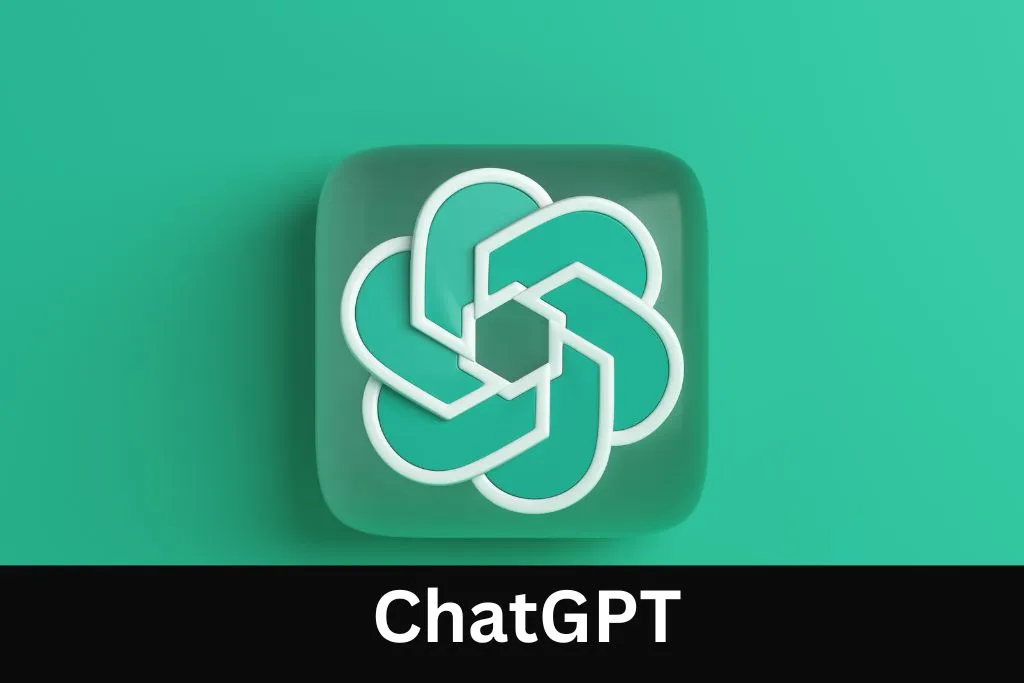ChatGPT is a large language model developed by OpenAI based on the GPT-3.5 architecture. It is designed to be a highly flexible and adaptive natural language processing tool that can be used for a wide range of applications, from chatbots to language translation and content creation. The model was trained on a vast corpus of data from the internet, including books, articles, and websites, to provide a powerful language model capable of understanding and generating human-like responses.
Capabilities of ChatGPT
ChatGPT has a range of capabilities that make it a powerful tool for natural language processing. One of its key strengths is its ability to understand and generate natural language responses that are contextually appropriate. This means that ChatGPT can understand the meaning behind a user’s words and respond in a way that is relevant and helpful.
ChatGPT can also be trained on specific domains or topics, allowing it to provide specialized responses in areas such as finance, medicine, or law. Additionally, it can generate text in multiple languages, making it a valuable tool for language translation.
Applications of ChatGPT
The versatility of ChatGPT makes it useful for a wide range of applications. One of the most common applications of the model is in chatbots, where it is used to provide intelligent responses to customer queries. ChatGPT can be trained on specific business domains to provide tailored responses that meet the needs of specific customers.
Another application of ChatGPT is in content creation. The model can generate high-quality articles and blog posts on a range of topics, making it a valuable tool for content marketers and publishers.
ChatGPT can also be used in language translation, allowing users to translate text from one language to another with high accuracy.
Benefits of using ChatGPT
There are several benefits to using ChatGPT. Firstly, it provides an efficient and cost-effective way to automate customer service interactions. ChatGPT can provide quick and accurate responses to customer queries, reducing the need for human customer service agents.
Secondly, ChatGPT can improve the quality and speed of content creation. It can generate high-quality articles and blog posts on a wide range of topics, reducing the need for human writers and editors.
Finally, ChatGPT can help businesses expand into new markets by providing accurate language translation services.
Customization options of ChatGPT
One of the benefits of ChatGPT is that it can be customized to meet the specific needs of businesses and organizations. For example, it can be trained on specific data sets and fine-tuned to provide more accurate responses in certain domains or industries. This customization allows businesses to create chatbots and content that are tailored to their specific audience, improving the user experience and driving better results.
Potential drawbacks of ChatGPT
While ChatGPT has many benefits, there are also potential drawbacks to using the model. One of the concerns is the potential for bias in the training data. If the training data is biased towards certain demographics or perspectives, ChatGPT may reproduce that bias in its responses. Another concern is the potential for misuse of the model, such as in the creation of fake news or misinformation.
Future developments of ChatGPT
As natural language processing technology continues to advance, there are many potential future developments for ChatGPT. One area of focus is on improving the model’s ability to understand and respond to emotional cues in language. This could allow ChatGPT to provide more empathetic and personalized responses in customer service interactions.
Another area of development is on improving the model’s ability to generate text that is indistinguishable from human-written content. This could have significant implications for content creation and journalism, potentially leading to the creation of more efficient and cost-effective newsrooms.
Collaboration with other AI tools
ChatGPT can also be used in collaboration with other AI tools to provide more advanced natural language processing solutions. For example, it can be combined with speech recognition technology to create voice-activated chatbots, or with image recognition technology to create chatbots that can understand and respond to visual cues.
Improving accessibility and inclusivity
ChatGPT can also be used to improve accessibility and inclusivity in various contexts. For example, it can be used to provide text-to-speech or speech-to-text services for individuals with disabilities. It can also be used to provide translation services for non-native speakers, allowing them to more easily access information and communicate with others.
Privacy and security concerns
There are also privacy and security concerns when using ChatGPT, as the model processes large amounts of user data. Businesses and organizations must ensure that they are following appropriate data protection regulations and taking steps to protect user information from unauthorized access or misuse.
Training and deployment of ChatGPT
Training and deploying ChatGPT can require significant technical expertise, as the model requires large amounts of data and computational power to function effectively. Businesses and organizations may need to work with data scientists or AI specialists to properly train and deploy the model.
Potential impact on employment
As ChatGPT and other natural language processing tools continue to advance, there is concern about their potential impact on employment. Chatbots and automated content creation tools may replace human workers in certain industries, particularly in customer service and journalism. However, there is also potential for ChatGPT to create new job opportunities in fields such as data science and AI development.
Ethical considerations
There are also ethical considerations to take into account when using ChatGPT. For example, there may be concerns about the use of the model in creating deepfakes or other forms of misleading or harmful content. Additionally, there may be concerns about the use of the model in collecting and processing user data, particularly in cases where users are not aware of or have not consented to the use of their data.
Regulatory landscape
As the use of natural language processing tools becomes more widespread, there is a growing regulatory landscape to consider. Businesses and organizations must stay up-to-date on relevant regulations and guidelines, such as GDPR in Europe or the CCPA in California, and ensure that they are in compliance with these regulations when using ChatGPT and other natural language processing tools.
Continued advancement and innovation
Finally, it is important to note that ChatGPT is just one example of the ongoing advancement and innovation in the field of natural language processing. As technology continues to advance, there is potential for even more powerful and sophisticated natural language processing tools to be developed, with even broader applications and impact.
Conclusion
ChatGPT is a powerful and versatile tool for natural language processing that has the potential to transform many industries and contexts. However, its use also raises important ethical, regulatory, and employment considerations. As businesses and organizations continue to explore the potential of ChatGPT and other natural language processing tools, it will be important to carefully consider these factors and work towards responsible and ethical use of these technologies.
Recommendations
Frequently asked questions (FAQs) About ChatGPT:
Q. What is the difference between ChatGPT and other chatbot platforms?
ChatGPT is a natural language processing tool that uses a machine learning algorithm to generate responses to user queries. Unlike rule-based chatbot platforms, which require developers to manually program responses to specific questions, ChatGPT can generate responses based on patterns and context from large amounts of training data. This makes it a more flexible and adaptable solution for businesses and organizations.
Q. How does ChatGPT handle sensitive information?
ChatGPT processes large amounts of user data, including potentially sensitive information. To protect user privacy and security, businesses and organizations must ensure that they are following appropriate data protection regulations and taking steps to safeguard user information from unauthorized access or misuse. It is also important to carefully consider the types of information that are being collected and processed by the model, and to ensure that users are aware of and have consented to the use of their data.
Q. Can ChatGPT be used for multilingual chatbots?
Yes, ChatGPT can be used for multilingual chatbots. The model can be trained on data in multiple languages, allowing it to generate responses in different languages depending on the user’s preferences or needs. This can be particularly useful for businesses and organizations that operate in global markets and need to communicate with customers or clients in different languages.
Q. How is ChatGPT trained?
ChatGPT is trained using a large dataset of text-based conversations, such as online chat logs or customer service transcripts. The model uses unsupervised learning algorithms to analyze patterns and context within the data, and to generate responses to new queries based on this analysis. The training process can require significant computational power and technical expertise, but can ultimately result in a highly effective natural language processing tool.
Q. What are some potential applications for ChatGPT?
ChatGPT can be used in a wide range of applications, including customer service chatbots, automated content creation, language translation, and more. Its versatility and flexibility make it a valuable tool for businesses and organizations looking to improve their communication and engagement with customers or clients, or to automate certain aspects of their operations.
Q. Can ChatGPT be used in healthcare?
Yes, ChatGPT can be used in healthcare to create virtual assistants, chatbots, and other applications that can help patients access information, schedule appointments, or receive personalized medical advice. However, it is important to ensure that these applications comply with relevant healthcare regulations, and that the information being provided is accurate and trustworthy.
Q. How accurate is ChatGPT?
The accuracy of ChatGPT can vary depending on a number of factors, such as the quality and size of the training data, the complexity of the queries being processed, and the level of customization and fine-tuning performed by the developer. In general, however, ChatGPT has shown to be highly effective at generating natural-sounding responses that can simulate human conversation.
Q. Can ChatGPT be integrated with other software platforms?
Yes, ChatGPT can be integrated with other software platforms, such as messaging apps or content management systems. This can help businesses and organizations automate certain aspects of their operations or provide more personalized customer experiences. Integration may require technical expertise, however, and it is important to ensure that the integration is secure and compliant with relevant regulations.
Q. How does ChatGPT handle complex queries or requests?
ChatGPT can handle complex queries or requests by using its machine learning algorithms to analyze the context and meaning of the query, and generate a response that is relevant and accurate. However, in some cases it may be necessary to provide additional training data or fine-tune the model to improve its accuracy for specific types of queries or requests.
Q. What are some potential limitations or challenges with using ChatGPT?
Some potential limitations or challenges with using ChatGPT include the need for large amounts of training data, the requirement for significant computational power and technical expertise, and the potential for bias or errors in the model’s output. Additionally, ChatGPT may not always be able to accurately understand or respond to highly nuanced or complex queries, and may require additional human input or intervention in certain cases.
Q. How can businesses and organizations get started with using ChatGPT?
To get started with using ChatGPT, businesses and organizations can work with a provider or developer who specializes in natural language processing and machine learning. The provider can help identify the specific needs and use cases for the application, and develop a customized solution that meets those needs. Businesses can also explore open-source tools and platforms for building their own ChatGPT-based applications.
Q. Can ChatGPT learn from user feedback?
Yes, ChatGPT can learn from user feedback to improve its accuracy and effectiveness over time. User feedback can be used to identify areas where the model is struggling or where additional training data is needed, and can help developers fine-tune the model to better meet user needs.
Q. How can businesses and organizations ensure that ChatGPT is accessible to all users?
To ensure that ChatGPT is accessible to all users, businesses and organizations should consider factors such as language barriers, cultural sensitivity, and accessibility needs when developing their applications. This may involve offering multiple language options, providing alternative formats for users with disabilities, or ensuring that the application is culturally appropriate for all users.
Q. What are some best practices for using ChatGPT in customer service?
Some best practices for using ChatGPT in customer service include providing clear and concise responses, using natural language that is easy for users to understand, and offering personalized recommendations or solutions based on user needs. It is also important to monitor the model’s performance over time, and to make adjustments or fine-tune the model as needed to improve its accuracy and effectiveness.
Q. Can ChatGPT be used to automate content creation?
Yes, ChatGPT can be used to automate content creation by generating articles, social media posts, or other types of content based on specific prompts or topics. However, it is important to ensure that the content being generated is accurate and trustworthy, and that it meets relevant quality standards for the intended audience.











